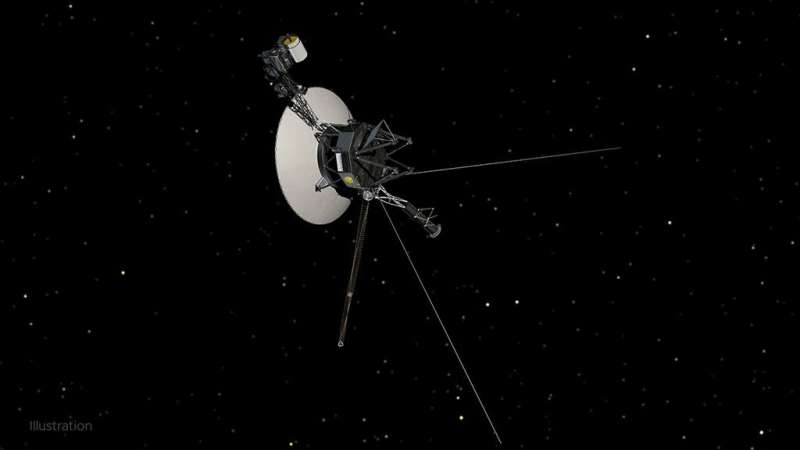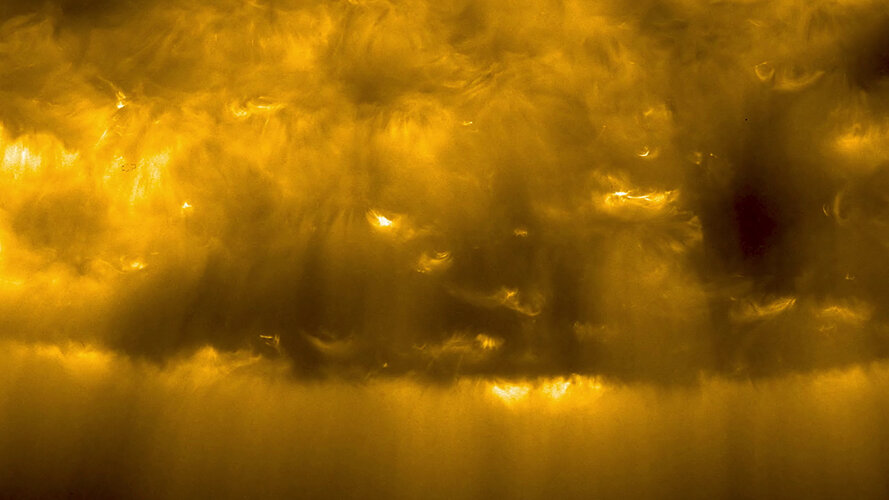
Copernical Team
SpaceX successfully launches rocket carrying 53 Starlink satellites
 SpaceX launched 53 Starlink satellites into orbit Wednesday, while also successfully recovering its two-stage Falcon 9 rocket, the company announced.
The company shared photos of the used Falcon 9 rocket taking off from its Florida launch pad and later setting down in the ocean aboard one of its autonomous drone ships.
"Falcon 9 has successfully lifted off carrying our 53 Starlink sa
SpaceX launched 53 Starlink satellites into orbit Wednesday, while also successfully recovering its two-stage Falcon 9 rocket, the company announced.
The company shared photos of the used Falcon 9 rocket taking off from its Florida launch pad and later setting down in the ocean aboard one of its autonomous drone ships.
"Falcon 9 has successfully lifted off carrying our 53 Starlink sa The origin of life: A paradigm shift
 According to a new concept by LMU chemists led by Thomas Carell, it was a novel molecular species composed out of RNA and peptides that set in motion the evolution of life into more complex forms
Investigating the question as to how life could emerge long ago on the early Earth is one of the most fascinating challenges for science. Which conditions must have prevailed for the basic buildin
According to a new concept by LMU chemists led by Thomas Carell, it was a novel molecular species composed out of RNA and peptides that set in motion the evolution of life into more complex forms
Investigating the question as to how life could emerge long ago on the early Earth is one of the most fascinating challenges for science. Which conditions must have prevailed for the basic buildin Engineers investigating Voyager 1 telemetry data
 The engineering team with NASA's Voyager 1 spacecraft is trying to solve a mystery: The interstellar explorer is operating normally, receiving and executing commands from Earth, along with gathering and returning science data. But readouts from the probe's attitude articulation and control system (AACS) don't reflect what's actually happening onboard.
The AACS controls the 45-year-old spac
The engineering team with NASA's Voyager 1 spacecraft is trying to solve a mystery: The interstellar explorer is operating normally, receiving and executing commands from Earth, along with gathering and returning science data. But readouts from the probe's attitude articulation and control system (AACS) don't reflect what's actually happening onboard.
The AACS controls the 45-year-old spac Everyone wants a piece of this Pie - Sols 3478-3479
 Despite the incredibly rough terrain surrounding Mirador butte, our nearly 10-year-old rover successfully drove a net distance forward ~10 meters and ~2 meters in elevation! To get a sense of what our Rover Planners try to avoid navigating this terrain, check out this Navcam image of our left front wheel at our parking spot.
Not only did the Sol 3476 drive succeed, but placed us perfectly
Despite the incredibly rough terrain surrounding Mirador butte, our nearly 10-year-old rover successfully drove a net distance forward ~10 meters and ~2 meters in elevation! To get a sense of what our Rover Planners try to avoid navigating this terrain, check out this Navcam image of our left front wheel at our parking spot.
Not only did the Sol 3476 drive succeed, but placed us perfectly End of the line nears for NASA InSight Mars lander
 After some four years probing Mars' interior, NASA's InSight lander will likely retire this summer as accumulated dust on its solar panels saps its power.
The lander will, however, leave behind a legacy of data that will be tapped by scientists around the world for years to come, helping to improve our understanding of planet formation, NASA said, while announcing on Tuesday the imminent en
After some four years probing Mars' interior, NASA's InSight lander will likely retire this summer as accumulated dust on its solar panels saps its power.
The lander will, however, leave behind a legacy of data that will be tapped by scientists around the world for years to come, helping to improve our understanding of planet formation, NASA said, while announcing on Tuesday the imminent en Blue Origin scrubs Friday launch over vehicle issue
 Aerospace manufacturer Blue Origin will delay its next sub-orbital spaceflight because of a vehicle issue, the company announced Wednesday.
Originally scheduled to take place Friday, the launch would have been the fifth manned flight for the Washington state-based company's New Shephard space vehicle.
"During our final vehicle checkouts, we observed one of New Shepard's backup system
Aerospace manufacturer Blue Origin will delay its next sub-orbital spaceflight because of a vehicle issue, the company announced Wednesday.
Originally scheduled to take place Friday, the launch would have been the fifth manned flight for the Washington state-based company's New Shephard space vehicle.
"During our final vehicle checkouts, we observed one of New Shepard's backup system Boeing's Starliner to launch uncrewed test flight to International Space Station
 Boeing and NASA are ready to launch the company's Starliner spacecraft to the International Space Station on Thursday.
A United Launch Alliance Atlas V rocket is scheduled to blast off from Space Launch Complex 41 at Cape Canaveral Space Force Station in Florida at 6:54 p.m. EDT for Operation Flight Test-2, or OFT-2.
The long-delayed test will see Starliner conduct an uncrewed flight
Boeing and NASA are ready to launch the company's Starliner spacecraft to the International Space Station on Thursday.
A United Launch Alliance Atlas V rocket is scheduled to blast off from Space Launch Complex 41 at Cape Canaveral Space Force Station in Florida at 6:54 p.m. EDT for Operation Flight Test-2, or OFT-2.
The long-delayed test will see Starliner conduct an uncrewed flight Engineers investigating NASA's Voyager 1 telemetry data

While the Voyager 1 spacecraft continues to return science data and otherwise operate as normal, the mission team is searching for the source of a system data issue.
The engineering team with NASA's Voyager 1 spacecraft is trying to solve a mystery: The interstellar explorer is operating normally, receiving and executing commands from Earth, along with gathering and returning science data. But readouts from the probe's attitude articulation and control system (AACS) don't reflect what's actually happening onboard.
The AACS controls the 45-year-old spacecraft's orientation. Among other tasks, it keeps Voyager 1's high-gain antenna pointed precisely at Earth, enabling it to send data home. All signs suggest the AACS is still working, but the telemetry data it's returning is invalid.
Blue Origin delays next flight over technical issues
Jeff Bezos' space company Blue Origin said it would push back the launch of its fifth crewed rocket, originally scheduled for Friday, over technical issues.
"During our final vehicle check-outs, we observed one of New Shepard's back-up systems was not meeting our expectations for performance," the company said in a statement Wednesday, referring to its suborbital spaceship.
"In an abundance of caution, we will be delaying the NS-21 launch," it continued, adding there would be further updates.
Blue Origin is a leading player in the nascent space tourism market, offering passengers a roughly ten minute hop from its base in west Texas to just beyond the atmosphere, and back again.
Ticket prices are a closely guarded secret.
The fifth flight is to include engineer Katya Echazarreta, who at 26 is set to become the youngest American woman in space.
Her spot was sponsored by the "Space for Humanity" program, which seeks to democratize access to space and selected her from among 7,000 candidates.
Blue flew its founder Bezos in its maiden crewed flight in July 2021, and has also flown Star Trek icon William Shatner and Laura Shepard Churchley, the daughter of the first American in space.
The Sun as you’ve never seen it before

Powerful flares, breathtaking views across the solar poles, and a curious solar ‘hedgehog’ are amongst the haul of spectacular images, movies and data returned by Solar Orbiter from its first close approach to the Sun. Although the analysis of the new dataset has only just started, it is already clear that the ESA-led mission is providing the most extraordinary insights into the Sun’s magnetic behaviour and the way this shapes space weather.
